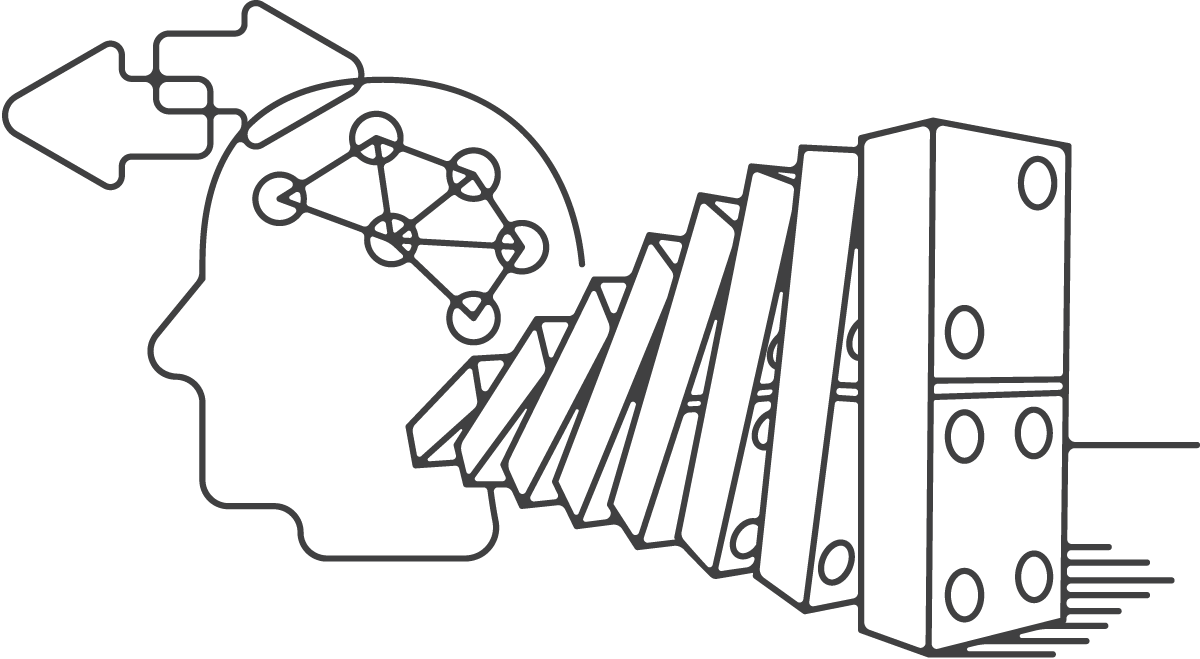We strongly believe that behavioral science is at the core of brand. Research has proven this countless times, reinforcing the idea that “branding” should consider behavior—not just aesthetics or strategy in isolation.
In previous posts, we’ve outlined how branding your business should take into account the fundamentals of behavioral science. But we want to take this a step further and flex the mental muscle a bit—this time, thinking about the branding of, not a business, but of a behavior.
Over the years, the term “branding” has been watered down—reduced to logos and color palettes that get slapped on a business without any real thought about psychology, strategy, or even the occasional pause to ask “Why are we doing this?” Most of the time, when people say “brand,” they’re referring to the company. But I think the next evolution of this conversation isn’t just to “brand the business”— it’s to brand the behavior.
Why this matters.
Your business serves real people. And people behave in all sorts of ways—some of them rational, a lot of them… not so much. Behavioral scientists even label many of our habits as “irrational,” though they’re still highly predictable.
Now ponder this: Your brand (the perception of your business) doesn’t just exist in a vacuum. It’s shaped by the behavior that leads someone to your business in the first place. The perception of your brand is sparked by the behavior that brings someone to your business.
That might just be the real magic trick of great brands. They’re not just top of mind because they branded the company—they’re top of mind because they branded the behavior that leads to the company.
Association is the key
That word — association — is everything. It’s also the first step in our Positioning Flywheel. Once a behavior is “branded,” the association gets tighter and more refined over time. Eventually, it creates a bond that’s harder to break.
But let’s define what we mean by “behavior,” because it’s not just physical action. It’s much more. It’s the reaction that sets off a chain of events. It could be pulling your hand away from a hot stove, feeling thirsty after a workout, or your boss telling you to go find a new vendor or supplier. The second that reaction happens, behavioral science is already in motion. Micro-triggers influence what we do next—and eventually, what brand we turn to.
Classic (but extreme) examples
When brands become synonymous with the behavior, they’ve reached a different level. Instead of a “permanent maker”, we say or think “Sharpie”. When we think of facial tissue, we generally refer to it as a “Kleenex”. Instead of “lip balm”, we generally refer to it as “Chapstick”.
Even the behavior of wiping your nose or reaching for lip balm is branded. Yes, these are outliers—but the psychology behind them is the same for every business. Neural shortcuts. Associations formed over time. Repetition. Familiarity. Simplicity.
Here’s the kicker: Most business owners want their brand to be thought of when someone is thinking about a problem or solution. But they overlook the chain reaction leading up to that moment.

It’s not about the thought. It’s about the trigger.
The mistake most companies make? They want to own the final thought—the moment someone says “I need a solution.” But that moment doesn’t just appear out of nowhere. Something sparked it. That spark—that trigger—is where branding behavior comes into play. And the most effective tool to influence it? Language.
Language shapes behavior
Language can rewire the domino effect. Say the word “computer.” You probably have at least two brands pop into your head. Now tweak the word slightly… “cool computer” leads most to think of Apple. “Basic computer” leads most to think of Dell or HP. Just one added descriptor completely changes the brain’s path.
That’s the power of language. It hijacks the behavior chain before your audience even realizes it. In fact, Kleenex, Sharpie, and Chapstick reverse-engineered this. Their names became part of the behavior. “I need a Kleenex” isn’t a thought—it’s a behavior branded in language.
Bringing it home
If your goal is for your brand to be the one that comes to mind—don’t just try to capture the final moment of decision. Work backward. Understand the behavior that leads up to it.
Pause and ask yourself:
- What situation is my buyer in?
- What triggers their need?
- What behavior happens next?
- What words would they use to describe it?
That’s how you start to align language with behavior. And that alignment is what allows you to anchor your brand—visually, verbally, and experientially. Yes, it’s complex. You’re dealing with extremely subjective, human stuff. Thoughts. Emotions. Context. But the more precisely you can map the behavior and pair it with language, the more naturally your brand becomes the default.
Because at the end of the day, branding a business is good. But branding behavior is where it gets great.

